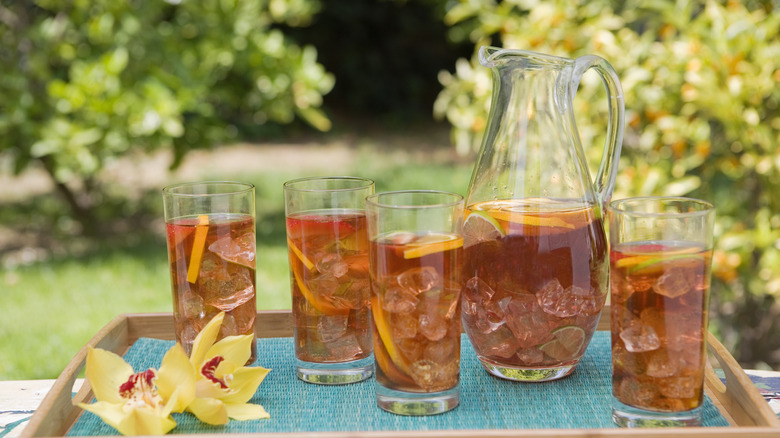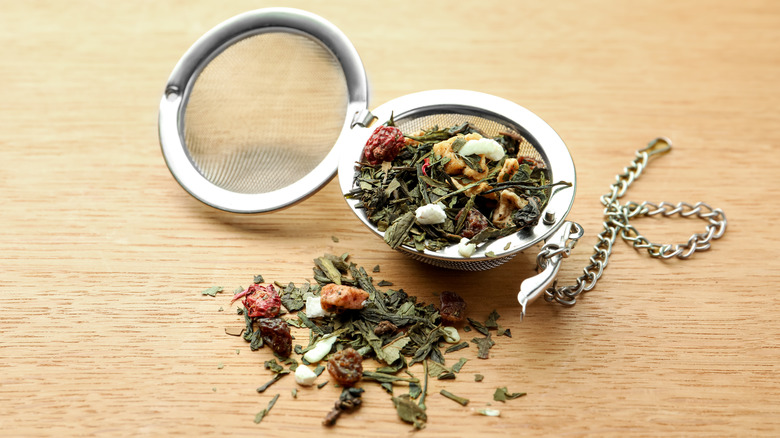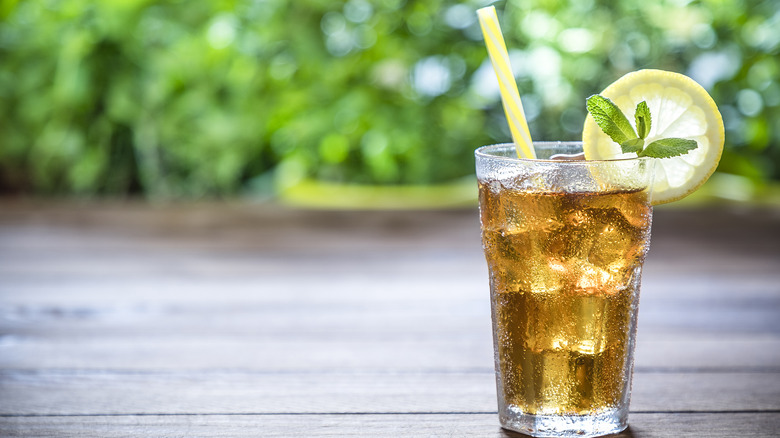The Common Mistakes That Are Ruining Your Iced Tea (And How To Fix Them)
Hot tea is a favorite beverage around the world, but in the United States — the country where iced tea truly took off during the 1800s — over 70% of drinkers enjoy it cold (via Tea Association of the USA). In America and other countries, you can find cold tea in ready-to-drink bottles or soda machines, but it's easy to make it at home, so long as you avoid a few common pitfalls. Food Republic spoke to tea expert Tony Gebely of Tea Epicure to find out how to avoid common mistakes that might ruin your glass of iced goodness.
Gebely notes two pervasive issues that can result in a bad batch of tea: using too much leaf or steeping for too long. Either of these mistakes can result in a cloudy concoction, or might transform your smooth and flavorful drink into a bitter brew that needs extra sugar to save it. "My goal is always to create an expression of the leaves that does not require sweetener, as most teas when steeped correctly can exhibit sweet qualities," Gebely says.
When measuring out your tea, use approximately double the amount you would for a cup of hot tea, whether you're using loose leaf or bags. If you choose to steep the tea hot, then chill it, remove the tea from the water within three to five minutes to avoid too much bitterness. But if you want to ensure your tea turns out perfect, Gebely recommends cold brewing.
How to cold brew iced tea
For an almost-foolproof way to craft a high-quality glass of iced tea, ditch the old method of boiling water on the stovetop. "Cold brewing, if you have the time, is a superior way to make iced tea," Tony Gebely says. "When you cold brew, you won't get a cloudy iced tea, and it is difficult to end up with a bitter end product." There are plenty of appliances meant for cold brewing tea on the market, but you can easily pull it off without any fancy equipment or accessories.
Gebely recommends using two grams of leaves for each cup of room-temperature water. Combine these in an airtight container and refrigerate it overnight. When your tea is ready, pour it through a fine-mesh sieve to remove the leaves, then return any leftovers to the refrigerator. You can generally expect homemade iced tea to stay fresh in the fridge for a few days, but its flavor will be best when it's just been made.
If the idea of straining your tea before you pour a glass sounds like a little too much in the morning, consider using a tea infuser or good old tea bags. Just use a spoon to retrieve either from the steeped tea before serving. While we won't knock you if you add sweetener, this method ensures a perfectly smooth flavor that doesn't need to be covered up by a bucket of sugar.
More tips for making the best iced tea
Another one of the most important tips for creating excellent iced tea is to start with high-quality tea and water. With only two ingredients in your cup, it will be easy to detect if one or both are inferior. Considering your water is more important than you think – if the flavor of the stuff from your tap is nice and clean on its own, it will be adequate. If not, consider investing in a filter that will remove unappealing flavors, or simply use pure, distilled bottled water.
As for the other part of your drink, tea bags won't do you wrong, whether you choose black, green, oolong, white, or something else. However, loose-leaf tea usually produces an end result that has more flavor than its bagged counterpart, because it tends to include whole, higher-quality leaves.
Another key to great tea is to avoid rushing the cooling process, if you're using the hot brew method. Tea that hasn't reached room temperature before refrigeration can become cloudy over time. Instead, once the tea bags are removed, allow it to cool a bit before transferring it to an airtight container in the fridge. Finally, if all else fails and your tea still turns out bitter or cloudy, don't despair. Simply sprinkle in a little baking soda for a fast remedy.



